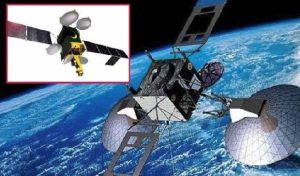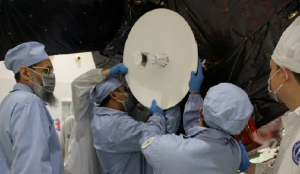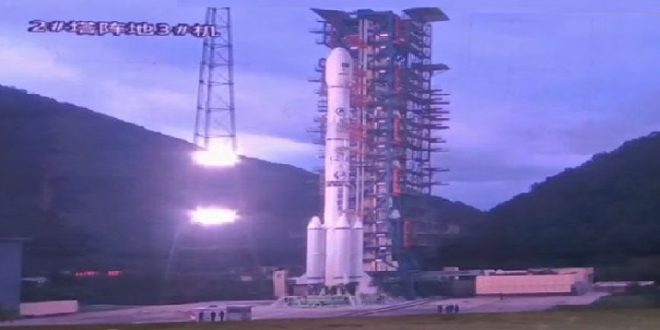31-05-2024
Bureau Report
ISLAMABAD/ BEIJING: Pakistan launched its latest modern communication satellite, the PAKSAT MM1, into space on Thursday, weeks after its ICUBE-Qamar (ICUBE-Q) entered lunar orbit.
ICUBE-Q was launched into space on May 3 aboard China’s Chang’e-6 lunar mission from Hainan, China. A major milestone in Pakistan’s space exploration efforts, the satellite successfully entered the moon’s orbit on May 8, and shortly after began transmitting the first images to earth.
 The Pakistan Space and Upper Atmosphere Research Commission (Suparco), the national space agency, now plans to launch another communication satellite with Chinese assistance.
The Pakistan Space and Upper Atmosphere Research Commission (Suparco), the national space agency, now plans to launch another communication satellite with Chinese assistance.
“Pakistan Space and Upper Atmosphere Research Commission will launch a new satellite PakSat MM1 on Thursday from Xichang Satellite Launch Center in China,” state broadcaster Radio Pakistan said.
“The satellite PakSat MM1 has been conceived keeping in view the growing needs of the country in the broad spectrum of communication and connectivity … Based on advanced communication technologies, PakSat MM1 will play a pivotal role in the socio-economic uplift of the country and will prove to be a stepping stone in the transformation of the country into Digital Pakistan.”
Earlier this week, state media said the satellite would help usher in a digital era in Pakistan by helping provide Internet to remote areas, as per Suparco officials.
The launch ceremony would be broadcast live from Suparco’s offices in Islamabad and Karachi.
Established in 1961, Suparco manages Pakistan’s space program, enhancing the nation’s capabilities in satellite communications, remote sensing and meteorological science.
Chang’e 6 is a planned robotic Chinese and Pakistani lunar exploration mission that is attempting Beijing’s second sample return mission and aims to obtain the first-ever soil and rock samples from the lunar far side and return them to earth. The samples will contain material ejected from the lunar mantle and will be used to provide insight into the history of the moon, earth, and the solar system.
 The primary phase of the mission is expected to last about 53 days. Around 100 students from Pakistan’s Institute of Space Technology (IST) contributed to developing the ICUBE-Q satellite.
The primary phase of the mission is expected to last about 53 days. Around 100 students from Pakistan’s Institute of Space Technology (IST) contributed to developing the ICUBE-Q satellite.
“It will prove to be a stepping stone in the transformation of the country into digital Pakistan. It will provide various communication services like broadband internet, TV broadcasting, mobile bank hauling, and VSAT connectivity,” added the spokesperson.
The launch follows the historic ICUBE-Q launch on May 3 on board China’s Chang’E6 mission.
ICube-Qamar achieved lunar orbit at 1:14 pm Pakistan time on May 9. Following its deployment on the moon, the satellite operated according to the designated parameters.
The Chang’e 6 mission is scheduled to commence its return journey to Earth on June 4 and is expected to reach the planet on June 25.
The quest to send a lunar orbiter started in 2022 when the China National Space Agency (CNSA), through the Asia Pacific Space Cooperation Organization (APSCO), offered member states an opportunity to send a student-built payload to Earth’s closest celestial neighbor onboard the Chang’e 6 mission.
 Pressmediaofindia
Pressmediaofindia




